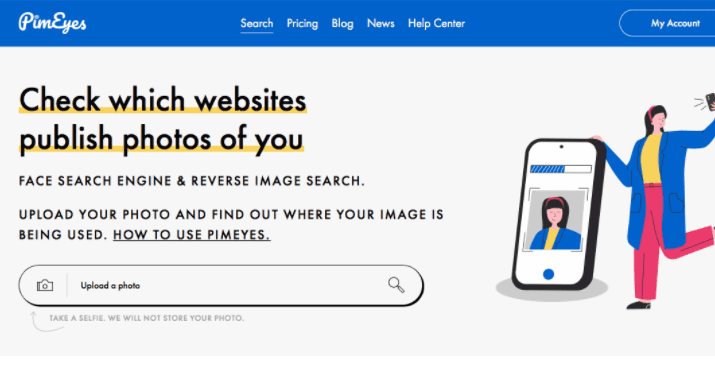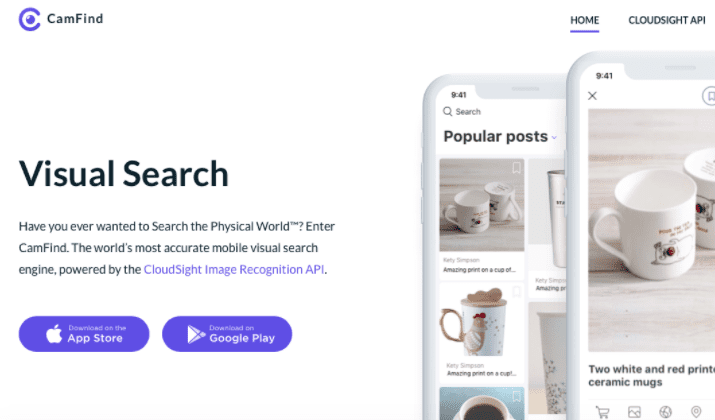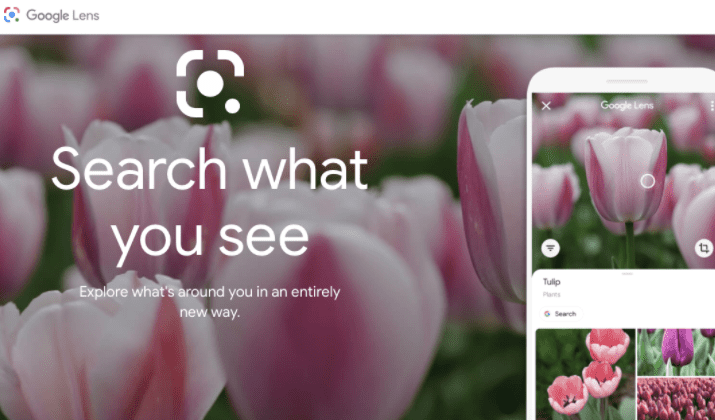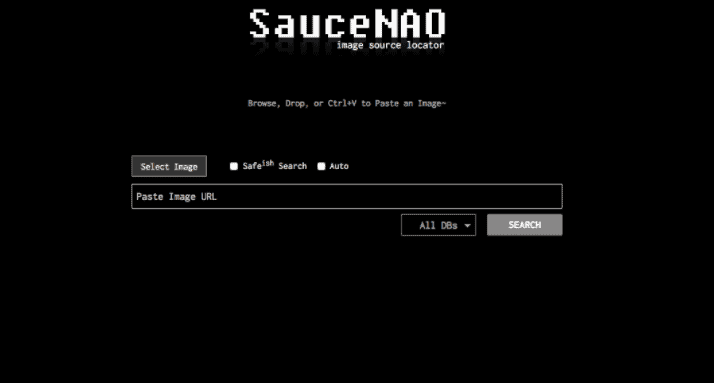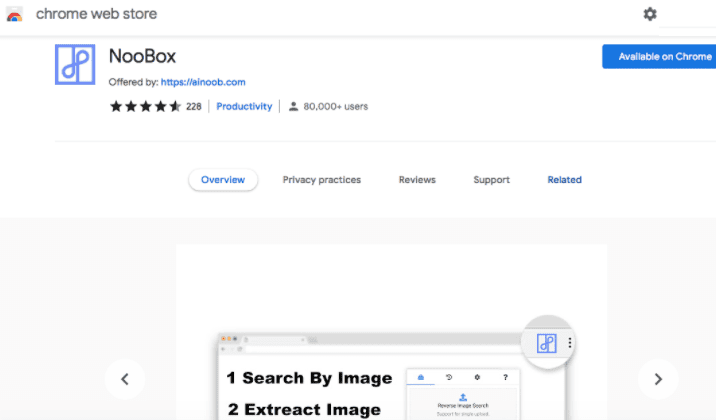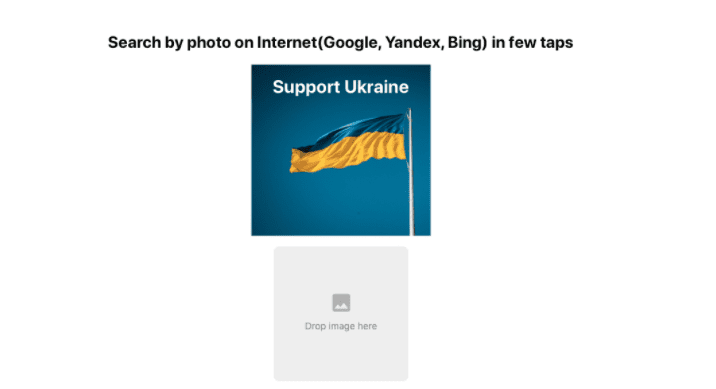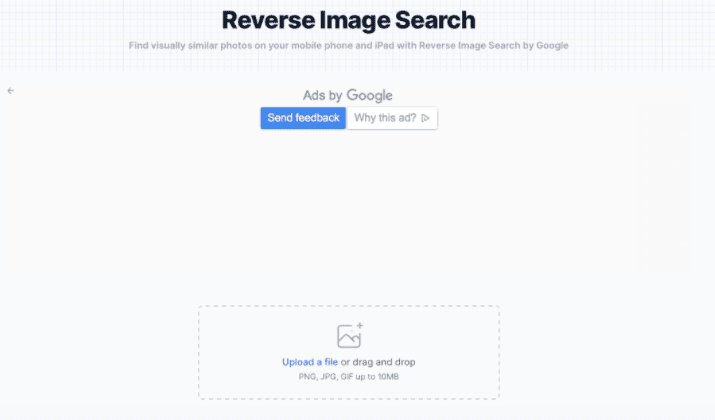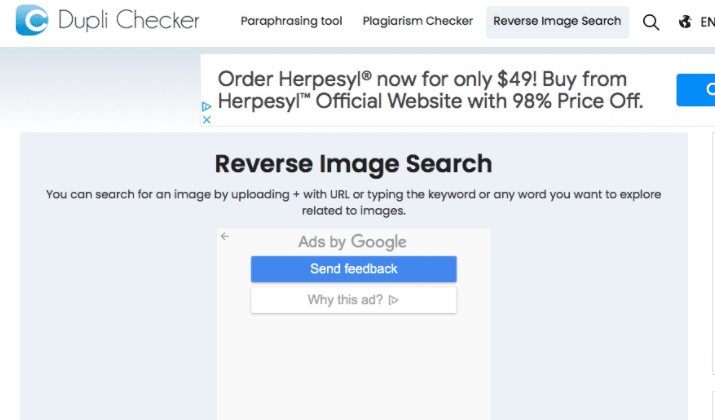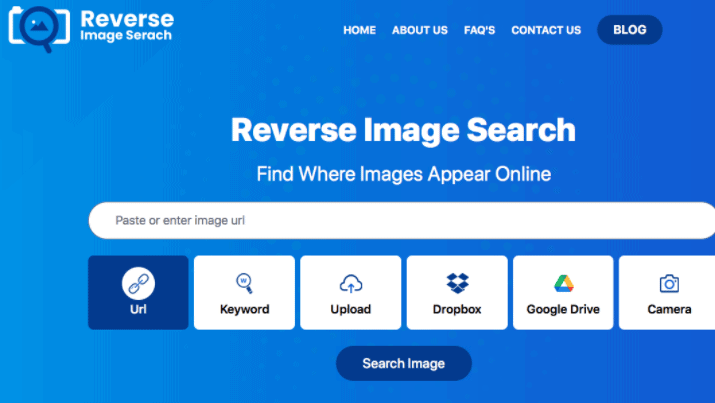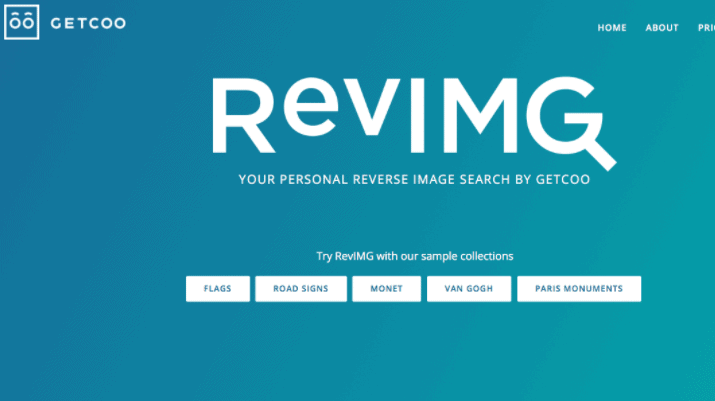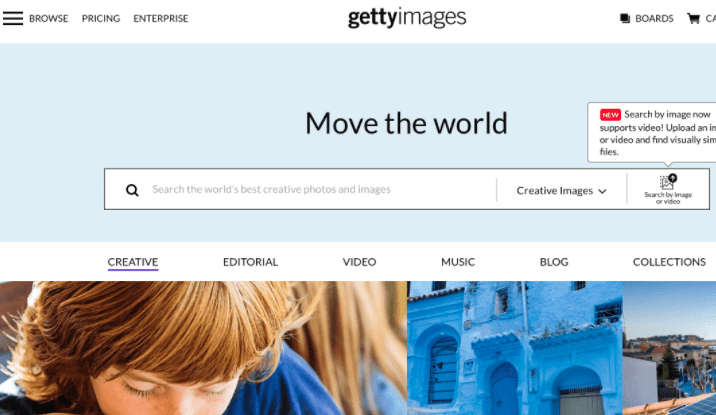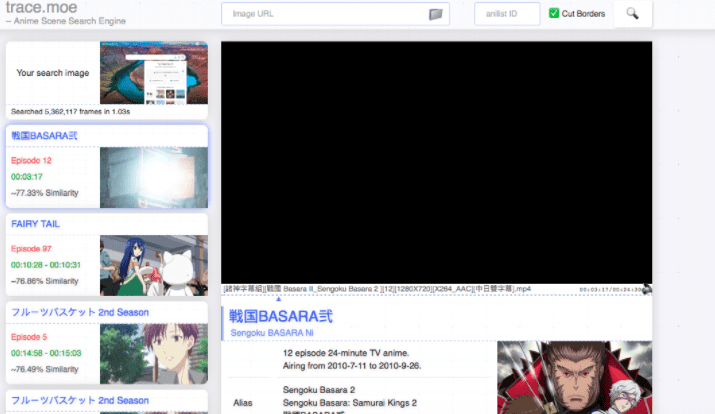TinEye is a search engine for images that allows you to reverse search for images. With such a reverse image search engine, you can find if any of your photos are posted on the internet and if any of the stock photos are used by other websites.
The search takes only seconds, yet it can be something that might take you days, if not weeks, to do on your own.
While TinEye is a great reverse image search engine, dozens of other reverse image search engines can provide a lot better features or better search results for specific types of images.
Therefore, down below, you can find some of the best TinEye alternatives on the internet and quickly decide in minutes!
Best TinEye Alternatives
1. Google Images Search
Google owns one of the biggest search engines globally, and while you can search for keywords, terms, and questions, you can also search for images in the Google Images section.
However, Google Images search includes a reverse search option where you get to search by image.
This means that you get to upload an image or paste an image URL to start your search to find the same or similar search results.
Even though there are billions of results, Google Images search only takes seconds, and yet you can find the same image you’ve searched for if it’s published on the internet and is indexed by Google.
Google Images is the best alternative compared to TinEye because it utilizes one of the world’s largest databases, so if Google can’t find it, it’s most likely not published anywhere on the internet.
The best of all is that Google Images search is free to use, and it is available directly in your browser without any additional installation requirements.
Explore: Best Spokeo Alternatives
2. PimEyes
PimEyes is another useful TinEyes alternative for two reasons. It has an efficient reverse image search tool, but it includes something that TinEye doesn’t – a facial recognition tool.
This comes in the form of a search engine that you can perform directly from their website, and even though it’s pretty straightforward, there is a brief guide that helps you make the most from your PimEyes searches.
Compared to TinEye, PimEyes can be a lot more useful since its facial recognition tool combined with reverse image search can help you find which websites have published images of you.
This way, you can easily audit copyright infringements and protect your privacy. PimEyes also includes a better process than TinEye since you can set alerts that can help you monitor your online presence, so if an image of you ever surfaces online, you’ll be the first one notified.
On top of that, PimEyes provides a tool that can help you erase unwanted photos from the internet, which is something TinEye can’t do.
Check out the best alternatives to PimEyes here.
3. CamFind
CamFind combines a reverse image search and a cam use that helps you utilize your smartphone to capture and search for physical images you take right in front of you.
That’s the biggest difference between CamFind and TinEye since CamFind makes the process a lot easier to find items or things around you on the web in only seconds.
CamFind is powered by CloudSight Image Recognition API that helps you take a photo using your smartphone, and then it processes it for image recognition before you get your results quickly generated.
Therefore, you can use CamFind to search for physical objects and items online, sharing your findings with friends and family. This is a feature that TinEye doesn’t include, yet it can be super useful if you and your family/friends love accessories and are always hunting for better deals online.
On top of that, CamFind can help you create visual reminders, which is something TinEye just can’t do and is yet another reason why CamFind’s 2-in-1 combination works flawlessly and makes a better alternative.
Check Out: Best Whitepages Alternatives
4. Google Lens
Google Lens doesn’t only help you reverse search for images, but it can also help you do it directly from your smartphone and even take advantage of your camera to capture things around you.
If you ever wanted to find something physical in Google quickly, then Google Lens can help you. You can use your smartphone’s camera to capture the physical object and find more about it on the web, no matter how big or small it is.
In comparison to TinEye, Google Lens helps you do the same thing. Yet, it also allows you to explore what is around you, find physical objects for purchase online, and quickly navigate the web differently.
On top of that, Google Lens technology helps you capture and translate text in seconds and even solve homework step-by-step.
The only slight downside is that you’ll have to download Google Lens to your smartphone because you can’t use it directly in the browser.
Explore: Best AnyWho Alternatives
5. SauceNAO
SauceNAO is a great tool if you’re looking to quickly find the source of images you have in your possession.
It’s one of the simplest reverse image search engines, and you can search for an image by copying and pasting your image, pasting a link, or browsing it on your computer/device.
Compared to TinEye, SauceNAO provides additional features, such as an Auto feature that automatically adjusts all needed settings or a Safeish Search feature that eliminates explicit results.
You also can choose to browse specific databases or leave it to search all databases by default.
What’s also great about SauceNAO is that it doesn’t only find the same or similar images, but it also does its best to identify the publisher of the photo.
While SauceNAO is free and is only funded by donations, you can always help by donating, or you can upgrade to unlock a couple of additional benefits for a small fee that can help run SauceNAO.
So in comparison to TinEye, SauceNAO is a lot simpler, but it’s a lot more straightforward to use while providing efficient results.
Also Read: Best US Phone Book Alternatives
6. NooBox
NooBox is an all-in-one tool that is different from TinEye, but it is a great alternative because, besides reverse image search, it also offers a couple of other tools. These tools include image extraction, screenshot & search functionality, auto-refresh, H5 video control, and the ability to reverse search images using multiple search engines at once.
However, the biggest difference between NooBox and TinEye is that NooBox comes as a Chrome browser extension which makes it a lot more convenient since it’ll always be right there when you need it. The only downside to this is that it’s only suitable for a Chrome browser.
NooBox is also a lot easier to use thanks to its convenience, and yet it still provides a lot more features than TinEye, which makes it a great alternative if you are in need of a more versatile way to take screenshots and find images that you can further extract right within one tool inside your browser.
Explore: Best Instadp Alternatives
7. Photo Sherlock
Photo Sherlock is a simplified TinEye version which is a very basic and simple website with an integrated reverse image search algorithm that can search through all search engines, including Google, Bing, Yahoo, and others.
All you need to do is drop an image, copy and paste it, or browse it from your computer to start your search.
When the search is finished, you’ll be given a choice of search engines to browse. Therefore, Photo Sherlock helps you comb through the web and find the same or similar images more quickly.
However, one interesting option is Face Sherlock, which is also an option you get after your search is done. This option is a similar service that can help you find the same or similar faces on social media.
This is a super useful service for everyone who’s worried their identity and face might be used by others on the web.
While you can use Photo Sherlock directly in your browser, it also offers an app for a smartphone (both Android and iOS devices), so you can reverse image search even on the go.
Related: Algolia vs Swiftype
8. Yandex Images
Yandex is a powerful search engine that’s often overshadowed by bigger search engines, but it comes with an advanced images search algorithm, allowing you to reverse search for images.
You only need to have your image on a desktop or have the image’s URL to start the search, and yet you can get results within seconds.
Compared to TinEye, Yandex Images can also recognize text in the images and various elements and even provide you with tools to crop the image for better search results.
On top of that, you can translate writing from the image, see similar images, and even get a list of sites that contain information about the image.
Therefore, the Yandex Images search is more advanced than the Google Image search, but it has a smaller database reach, so it’s not as popular. However, Yandex Images includes plenty of features for a simple search engine, and yet it can provide almost as efficient results for free.
9. Labnol Digital Inspiration
Labnol Digital Inspiration is a reverse image search tool that’s available directly in the browser, and it’s a simplified version of TinEye.
However, its biggest strength is providing a reverse image search for users on smartphone devices, while many other similar tools can’t.
Therefore, all you have to do is open the Labnol Digital Inspiration engine, upload an image, drop it, or copy and paste it. It only has to be a common image format and no bigger than 10 Mb in size.
The website and search engine operate smoothly and are simple, ensuring fast search speeds on mobile devices.
Therefore, with Labnol Digital, you can quickly find the same photo or similar photos, with other useful information such as the first date it was published. So you can use this alternative to find if any of your images have been used without permission and even how they were used on the internet.
Labnol Digital’s other advantage is the ability to upload images directly from iCloud, Dropbox, Google Drive, or even take one with your device using the camera.
Also Read: Finsta Meaning & How Do You Use One?
10. Dupli Checker Reverse Image Search
Dupli Checker is a reverse image search engine that’s available for use within the browser, and if you’re looking for websites and sources that have used an image you have or you’re looking to find similar images to yours.
However, one of the biggest differences between Dupli Checker and TinEye is that Dupli Checker gives users the ability to search by keyword and image. This combination helps narrow down the results and gives a much more accurate tool while searching through dozens of search engines.
Another one of Dupli Checker’s advantages is the multi-language support and the fact that Dupli Checker finds similar images and the same images that come in different sizes than the original.
Some of the most popular search engines it searches through include Google, Bing, Yandex, Baidu, and others.
11. Reverse Image Search
Reverse Image Search is one of the fastest and the most extensive TinEye alternatives that gives users plenty of options.
Besides reverse image search from a URL, you can do the same by inputting a keyword, uploading an image from your computer/smartphone, or uploading a photo from Dropbox and Google Drive.
Reverse Image Search also allows you to take photos directly using your device’s camera, taking full advantage of Reverse Image Search’s engine even when you’re on the go.
You even get to choose which search engines you’d like to use for your search, as Reverse Image Search can browse Google, Bing, Baidu, Yandex, and Board engines. What’s great is that you can choose more than one search engine, and then you can compare results and explore images in various engines.
No matter how many search engines you choose to use, the search will always be lightning-fast and you’ll have access to a massive database of images posted all over the internet.
However, the biggest Reverse Image Search’s advantage over TinEye is finding edits of the original photo and listing it under similar photos so you can still find if your photo was used anywhere on the internet.
12. RevIMG
RevIMG is an advanced version of TinEye that doesn’t only reverse image search via text but also uses three different processing engines to provide the most accurate results.
These processing engines include computer vision, image processing, and analysis, which can consider every aspect of an image’s content before providing relevant images.
RevIMG is a lot more flexible, reliable, and faster since it can search through millions of items without affecting performance, accuracy, or speed.
What’s also great about RevIMG is that you can create your image collections and browse through pre-existing image collections to improve your results further since RevIMG doesn’t leave everything up to artificial intelligence.
However, you can use RevIMG on your smartphone, just like you can use it on your desktop computer, which means you can take live captures and get results within seconds.
A big difference between TinEye and RevIMG is that RevIMG’s technology isn’t free, and yet for the latest pricing, you can visit their official pricing page.
13. Getty Images
Getty Images is one of the largest stock photo libraries on the internet, and one of the features that’s often overlooked is the Similar Image search.
The Similar Image search feature allows you to search for other images based on your image, which is useful if you’re looking for similar images of the same things and even for duplicates that come in a higher quality.
The main difference between Getty Images and TinEye is that Getty Images doesn’t rely on search engines solely on its library that’s full of stock photos, while TinEye bases its searches on search engines.
Therefore, while you can only get images from Getty Images, it can still be useful for certain purposes, such as finding better quality photos, similar photos that fit a certain style, etc.
However, Getty Images’s biggest advantage is the ability to search images by video, which is very rare to find. This feature allows you to find images of spots, locations, and objects visible in a video.
14. Bing Images
Bing is the third world’s largest search engine, and it’s often overlooked, but it excels at providing unique image results.
Therefore, replacing TinEye with Bing Images search functionality is a possibility. Most reverse image search tools rely on search engines such as Bing, but if you head straight to Bing, you can discover and use some of its unique features yourself.
These unique features at Bing Images include dragging more than one photo to make your search results much more accurate and save time.
You also get to paste the image’s URL or even take a photo that is useful for smartphone users who need the quickest way to find something around them.
The results you get will include the same images, similar images, and web pages that feature the image. On top of that, Bing can show you related content that includes more relevant results, and if you search with more than one image, the results can be fruitful.
15. trace.moe
If you’re looking for the most specific reverse image search engine on the internet, and that specific purpose is to find scenes from anime, then trace.moe is the best pick and the TinEye alternative.
trace.moe is a simple search engine with a very specific database that can help you find and trace the scene of anime from an image.
You can start your search by inputting the image URL or browsing the image from your computer, yet you’ll get results within seconds.
The results will showcase the possible scenes with visuals, so you’ll quickly find what you’re looking for. Along with the visuals, you’ll get useful information such as the episode, season, airing time, aliases if characters are in question, and even external links to learn more.
trace.moe includes a similarity percentage that can help you quickly narrow down your anime scene from dozens of similar scenes out there so you can quickly come to your results.
Conclusion
Google Image Search is the best TinEye alternative because it is the largest search engine on the internet, with the largest database and technology that crawls websites daily to fetch newly published images quickly.
If you are looking for a very specific image, an image that can’t be easily found on the web, or an image that doesn’t have too many similarities and TinEye can’t be much of help, Google Image Search is worth a shot.
Along with Google Image Search, other picks such as Google Lens or Dupli Checker Reverse Image Search can help improve the versatility and convenience missing in TinEye while keeping the efficiency level as high.

Scott L. Macarthur is a marketing consultant and an online author. He is mostly engaged in providing his expertise to startups and SMBs. He is also an author on TheNextWeb.

